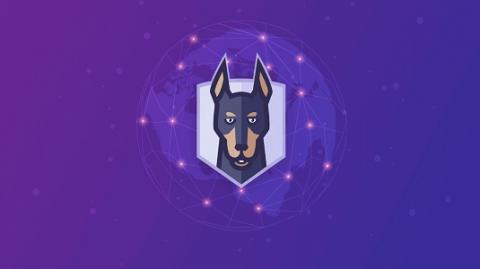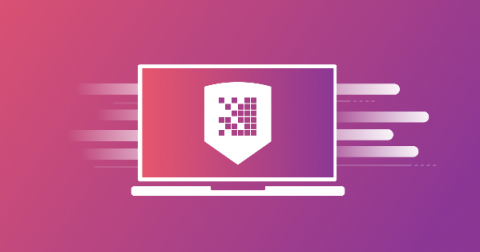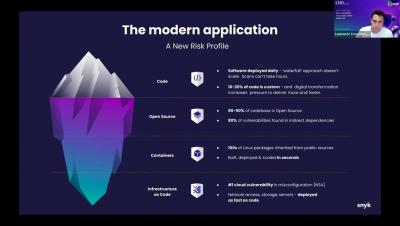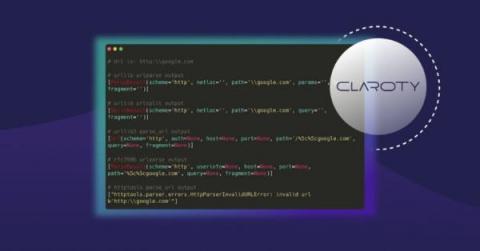Security | Threat Detection | Cyberattacks | DevSecOps | Compliance
January 2022
Analyzing the PwnKit local privilege escalation exploit
What do Linux vulnerabilities and natural disasters have in common? Something seemingly dormant can suddenly spring to life, exposing activity beneath the surface. Several days ago, a security researcher published a high-severity vulnerability named PwnKit that impacts most major Linux distributions. The scary part? It’s existed since May of 2009. Polkit is a component for controlling privileges in Unix-like operating systems and is included by default on most major Linux distributions.
SnykCon recap: Building a developer-focused AppSec program
Building an application security program can be overwhelming. The steady stream of content encouraging teams to shift left is inspiring, but it doesn’t help you get started. Looking toward organizations with mature AppSec initiatives can make the gap seem insurmountable — all while an actionable plan remains elusive. Like anything else in software development, application security is a journey. A journey that’s much more enjoyable with some guiding principles.
Vulnerability of the Month: nanoid
Tame the snake: Snyk shines a spotlight on Python security
PHP security in Snyk Code now GA
We recently announced our beta release for PHP support in Snyk Code, which brought with it the ability to identify potential PHP security vulnerabilities at the code level. After a successful public beta program, PHP security support in Snyk Code is now GA. 🎉🎉🎉 PHP is a popular programming language that is used by developers all over the world. In this blog post, we will take a look at some of the features of Snyk Code and how it can be used with PHP.
Stranger Danger: Live hack of how a Log4Shell exploit works
The Log4Shell vulnerability took the Java community by surprise at the end of 2021, and many organizations are still mitigating its impact. To help development teams stay informed as the situation unfolds, Snyk has created and continues to update its Log4j vulnerability resource center.
Fix security issues, get a tshirt. The Big Fix by Snyk.
How Lunar shifted security left while building a cloud native bank
At SnykCon 2021, there were a number of insightful talks from companies that were able to build successful AppSec programs. As the Lead Platform Architect at Lunar and a Cloud Native Computing Foundation (CNCF) ambassador, Kasper Nissen’s presentation was no exception. In this post, we’ll recap Nissen’s talk about how his security team at Lunar was able to shift security left while building a cloud native bank.
Enabling policy as code (PaC) with OPA and Rego
The Cambridge Dictionary defines a policy as: “a set of ideas or a plan of what to do in particular situations that has been agreed to officially by a group of people, a business organization, a government, or a political party.” And in the context of software development, your organization may have some rules about how a policy is built, configured, deployed, and used. Some examples of software policies include.
A Day In The Life Of A Field CISO - Steve Kinman
The Big Fix 2022 - Getting Started Guide
Live Hacking: Find Vulnerabilities in Your Apps Before Hackers Do
Snyk Code scanning added to the Snyk Visual Studio extension
Snyk Code provides a new generation of static application security testing (SAST). It uses a unique process that uses machine learning to rapidly grow its knowledge base and a Snyk security engineer to assure the quality of the rules. As a result, the Snyk Code knowledge base grows exponentially and results in an industry-leading high accuracy. On top of that, Snyk Code provides real-time scanning so developers can use it right from their favorite IDE.
What is URL Confusion?!
Chatting with the Log4JShell Bytecode Detector Creators
Welcoming Samantha Wessels: Snyk's New Vice President, EMEA Sales
What You Should Know About npm Packages 'colors' and 'faker'
New years resolution: Don't show my security tokens when hacking my demo application on stage
Traditionally, we start the new year with resolutions. We want to do more good things, like working, other things we try to eliminate. Considering the latter, my 2022 resolution is to stop accidentally exposing confidential information while I hack my application during demos on stage or similar. Yes, this new years resolution sounds very specific, and it has an excellent security horror story behind it…
URL confusion vulnerabilities in the wild: Exploring parser inconsistencies
URLs have forever changed the way we interact with computers. Conceptualized in 1992 and defined in 1994, the Uniform Resource Locator (URL) continues to be a critical component of the internet, allowing people to navigate the web via descriptive, human-understandable addresses. But with the need for human readability came the need for breaking them into machine-usable components; this is handled with URL parsers.
Open source maintainer pulls the plug on npm packages colors and faker, now what?
On January 8, 2022, the open source maintainer of the wildly popular npm package colors, published colors@1.4.1 and colors@1.4.44-liberty-2 in which they intentionally introduced an offending commit that adds an infinite loop to the source code. The infinite loop is triggered and executed immediately upon initialization of the package’s source code, and would result in a Denial of Service (DoS) to any Node.js server using it.
FTC highlights the importance of securing Log4j and software supply chain
Earlier this week, the FTC issued a warning to companies regarding the Log4j vulnerability. Given the rampant exploitation of the recently discovered vulnerabilities in this ubiquitous open source logging package, it’s encouraging to see the agency take this rare step, beginning to form a firm stance on software supply chain security. Although this increased scrutiny from the FTC may at first seem daunting, violations can be remediated with the right practices.
The Missing Pieces in Securing your SDLC
Demystifying DevOps-Pros, cons, dos & don'ts
Developer security resolutions for 2022
As 2022 begins, it’s a great time to set resolutions for the coming year. Don’t worry, we don’t expect you to become a CrossFit guru or break world records on your Peloton. Instead, how about you set goals to improve your abilities as a secure developer? All too often, we choose resolutions that set ourselves up for failure. A better approach is to set realistic goals.
CTF secrets revealed: TopLang challenge from SnykCon 2021 explained
If you attended SnykCon 2021, you may remember our inaugural CTF: Fetch the Flag. In this CTF, TopLang was a web challenge of medium difficulty that we received a lot of positive feedback about. So for those of you that loved it, this write-up explains how our team internally approached tackling and solving this challenge. This challenge was a pretty typical example of what is known as an “oracle attack” using blind SQL injection.
New workshop for securing a DevOps pipeline with Snyk, Bitbucket, and AWS
Development teams are frequently under the gun to deliver software quickly, which is difficult to do without modern tools to build, test, and deploy applications efficiently. That’s why Atlassian’s Bitbucket Cloud — a Git-based source code repository service in the cloud that streamlines software development for collaborative teams — was built for both speed and efficiency. The challenge nearly all organizations face is ensuring development speed and security at the same time.
Log4Shell webinar: What you need to know
No matter your role in tech, you’ve probably already heard about, or dealt with, the ubiquitous Log4Shell vulnerability impacting a large number of Java applications. To help spread the latest info on this critical, zero-day vulnerability, we recently hosted a webinar to get everyone up to speed.




























